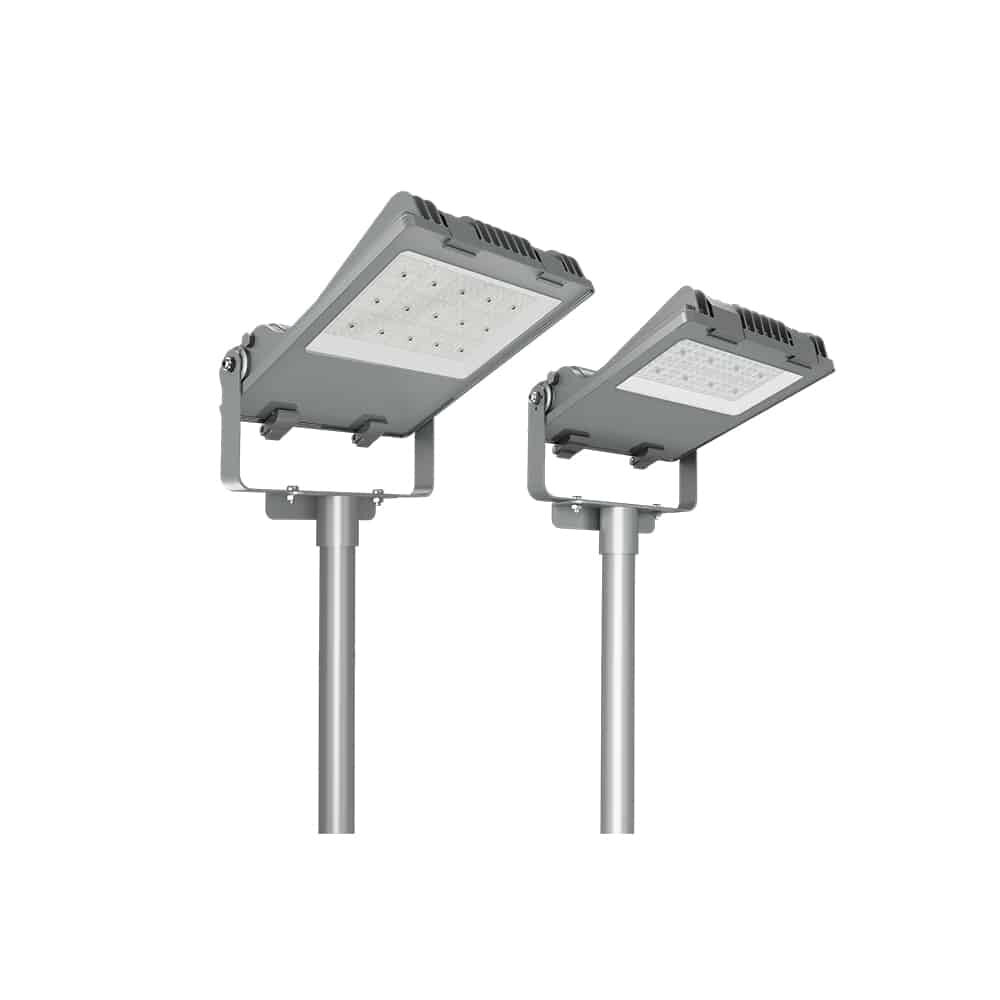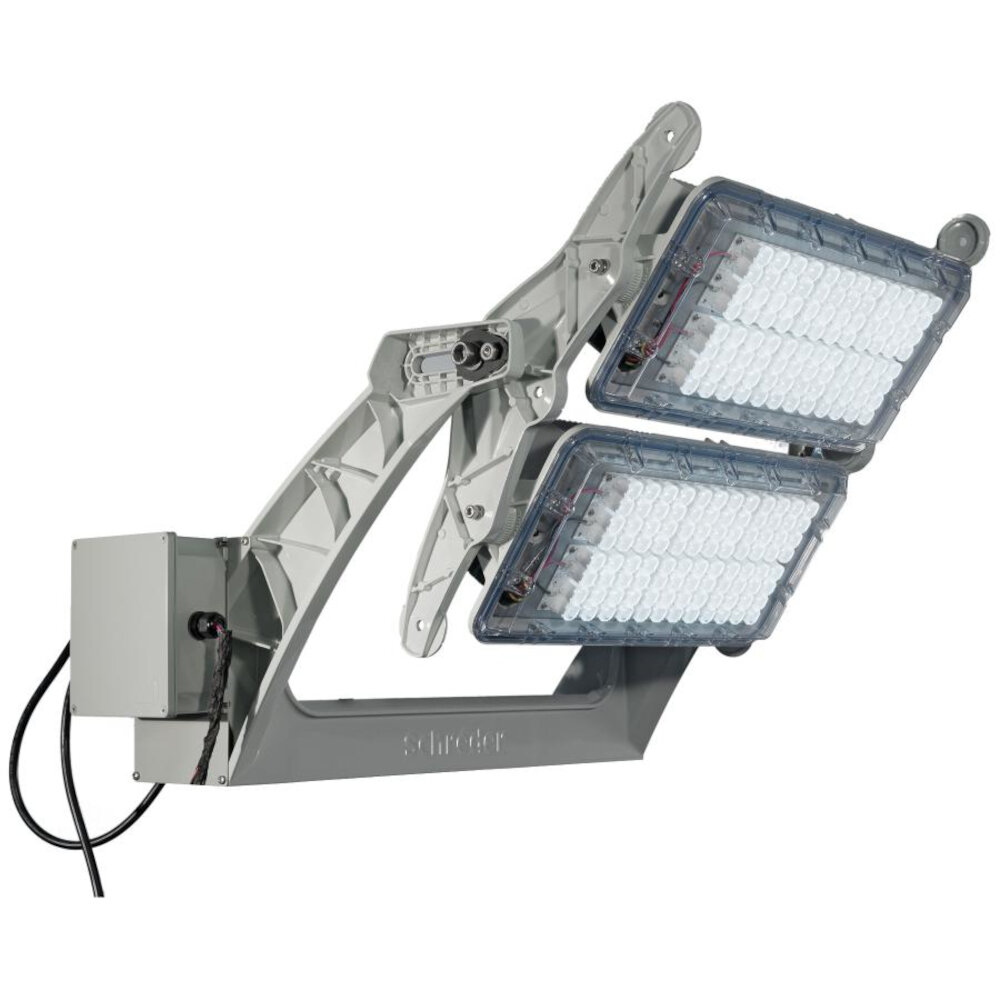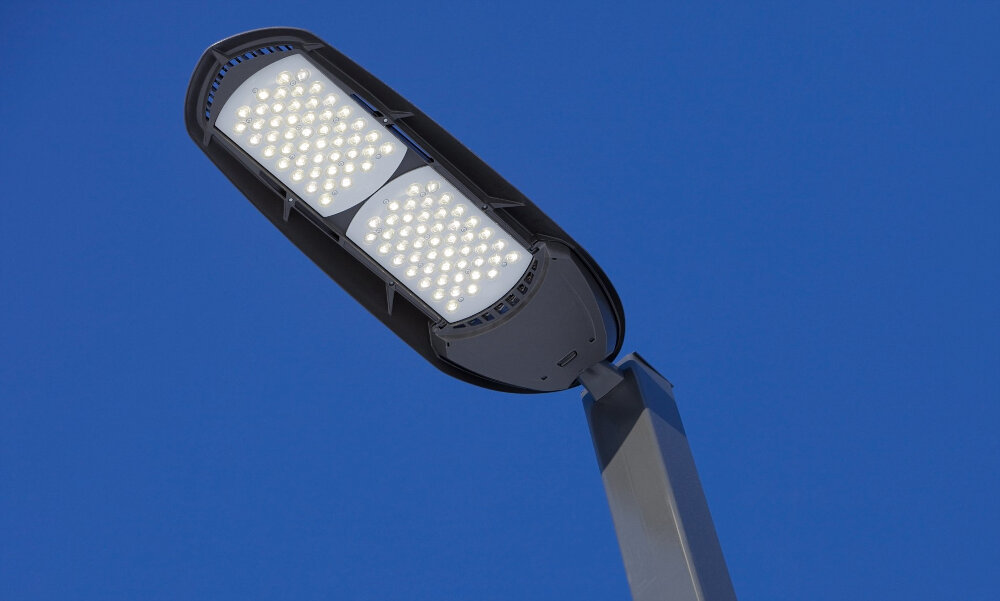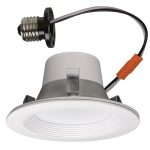Why LED Light Bulbs Flicker: Understanding the Cause and How to Fix It

LED light bulbs have become increasingly popular in recent years due to their energy efficiency and longevity. However, one issue that can arise with LED bulbs is flickering. Flickering can be annoying and even cause headaches for some people. It’s important to understand the causes of LED bulb flickering so that you can take steps to fix the issue and enjoy the benefits of LED lighting without any unwanted side effects. There are several reasons why LED bulbs may flicker, including voltage fluctuations, incompatible dimmer switches, and poor quality bulbs. Understanding these causes can help you troubleshoot the issue and find the best solution for your specific situation. In this article, we will explore the common causes of LED bulb flickering and provide tips on how to fix the problem so that you can enjoy the full benefits of LED lighting.
LED lights, or light-emitting diodes, are a type of lighting technology that have become increasingly popular in recent years due to their energy efficiency, longevity, and versatility. Unlike traditional incandescent bulbs, which use a filament to produce light, LED bulbs use a semiconductor to convert electrical energy into light. This makes them much more energy-efficient than other types of bulbs, and they also last much longer. However, one common issue with LED bulbs is flickering, which can be caused by a variety of factors such as voltage fluctuations, incompatible dimmer switches, or even the bulb itself. Understanding the cause of the flickering and how to fix it is essential for ensuring optimal performance and longevity of LED bulbs.
LED lights have become increasingly popular due to their energy efficiency, longevity, and environmental friendliness. They consume significantly less electricity than traditional incandescent or halogen bulbs, which translates into reduced energy bills and a smaller carbon footprint. Additionally, LEDs last much longer than other types of bulbs, which means less frequent replacements and lower maintenance costs. However, as with any technology, LED lights can present some issues, such as flickering. Understanding the cause of flickering and how to fix it is crucial to ensure the optimal performance and longevity of these energy-efficient bulbs.
This informative article delves into the common issue of flickering LED light bulbs, providing an in-depth explanation of the causes and potential solutions. The author explains that while flickering can be a natural characteristic of certain bulbs, it can also be caused by a variety of external factors such as voltage fluctuations, incompatible dimmer switches, or faulty wiring. The article then goes on to provide practical tips and solutions for fixing the issue, from replacing the bulb or dimmer switch to hiring an electrician to inspect and repair faulty wiring. Overall, this article is an excellent resource for anyone experiencing flickering LED light bulbs and seeking a better understanding of the underlying causes and potential solutions.
What Causes LED Lights to Flicker?

LED lights, or light-emitting diodes, have become a popular lighting option in recent years due to their energy efficiency and long lifespan. However, one issue that can arise with LED lights is flickering. Flickering can be a frustrating and distracting problem, and it’s important to understand the causes and potential solutions. There are several factors that can cause LED lights to flicker. One common cause is voltage fluctuations in the electrical system. LED lights require a constant and stable voltage to operate properly, and fluctuations in voltage can cause them to flicker. This can be especially problematic in older homes or buildings where the electrical system may be outdated or not properly grounded. Another potential cause of LED flickering is the use of incompatible dimmer switches. LED lights require specific dimmer switches that are designed to work with them, and using the wrong type of dimmer switch can result in flickering or even damage to the lights. Finally, flickering can also be caused by the lights themselves. Poor quality LED lights may be more prone to flickering, and overheating can also cause flickering or even failure of the lights.
LED light flickering can be caused by various factors. One of the most common causes is voltage fluctuations in the electrical supply system. When the voltage varies, it affects the current supply to the LED light, leading to flickering. Another cause of flickering can be a faulty LED driver that fails to regulate the current supply to the LED light. Additionally, loose connections in the wiring can also cause flickering. These loose connections can lead to voltage drops that cause the LED lights to flicker. Lastly, dimmer switches that are not compatible with LED lights can also cause flickering. This is because these dimmer switches are designed to work with incandescent bulbs, which have a different power requirement than LED lights. Understanding the causes of LED light flickering can help in finding the right solution to fix it.
Voltage fluctuations can have a significant impact on the performance of LED lights. These fluctuations can cause flickering, which can be frustrating and potentially harmful to the eyes. The flickering can be caused by several factors, including the quality of the LED driver, the quality of the power supply, and the presence of other electrical devices in the same circuit. To address these issues, it is important to use high-quality LED drivers and power supplies, and to ensure that the circuit is properly grounded. Additionally, it may be helpful to use a voltage regulator or surge protector to stabilize the voltage and prevent fluctuations. By taking these steps, it is possible to ensure that LED lights function properly and provide consistent, reliable illumination.
In recent years, LED light bulbs have gained popularity due to their energy efficiency and longevity. However, many users have faced the issue of flickering LED lights, particularly when using dimmer switches. This is because traditional dimmer switches were designed for incandescent bulbs, which have a higher wattage and different electrical characteristics than LED bulbs. As a result, when using a dimmer switch with an LED bulb, the varying voltage can cause the LED to flicker or even malfunction. To prevent this, it is important to use a dimmer switch specifically designed for LED bulbs or replace your existing dimmer switch with an LED-compatible one. Additionally, choosing high-quality LED bulbs and ensuring proper wiring and installation can also help reduce flickering.
Other Factors That Can Cause LED Lights to Flicker

While voltage fluctuations are the most common cause of LED light flickering, there are other factors that can contribute to this issue. One of these factors is the presence of electromagnetic interference (EMI). EMI can occur when electronic devices in the area are emitting radio waves, causing interference with the LED lights. Common culprits of EMI include Wi-Fi routers, cell phones, and even microwaves. To fix this issue, it may be necessary to relocate the LED lights or electronic devices to reduce interference or install an EMI filter. Another factor that can cause LED light flickering is the quality of the LED driver. The LED driver is responsible for regulating the flow of electricity to the LED lights. If the driver is of low quality or incompatible with the LED lights, it can cause flickering. In this case, replacing the driver with a higher quality one can solve the problem. Additionally, it is important to ensure that the driver is the correct size and wattage for the LED lights being used, as using an undersized driver can also cause flickering.
Temperature can have a significant impact on LED light flickering. As LEDs are temperature-sensitive devices, their performance can be affected by changes in temperature. When the temperature of the LED bulb rises, its internal resistance decreases, leading to a higher current flow. This increased current flow can cause the LED bulb to flicker or even fail altogether. Additionally, changes in temperature can affect the internal components of the LED driver or power supply, which can also contribute to flickering. Therefore, it is essential to consider temperature when selecting LED bulbs and to ensure that they are installed in an appropriate environment. By maintaining a stable temperature and choosing quality LED bulbs with proper thermal management, LED flickering can be minimized or eliminated.
The quality of LED drivers plays a crucial role in determining the flickering of LED lights. LED drivers are responsible for controlling the amount of current that flows through the LED light bulb. When the driver is of poor quality, it can cause fluctuations in the current, leading to flickering lights. Additionally, low-quality drivers may not be able to regulate the voltage effectively, causing the LED light to flicker or dim. Therefore, it is essential to invest in high-quality LED drivers to ensure stable and consistent lighting. Quality LED drivers can prevent flickering and ensure that the LED light bulbs operate efficiently, providing long-lasting and sustainable lighting solutions.
The wiring in a home can significantly impact the flickering of LED light bulbs. When LED lights flicker, it can be due to voltage fluctuations caused by the wiring in the house. In older homes, the wiring may not be equipped to handle the low voltage that LED lights require, which can cause them to flicker. Additionally, if the wiring is faulty or not properly installed, it can create interference that affects the performance of the LED bulbs. Moreover, electrical surges, power outages, and changes in temperature can also cause flickering. Therefore, it is crucial to ensure that the wiring in the home is compatible with LED lights and is installed correctly to prevent flickering issues.
How to Fix LED Light Flickering

LED light bulbs have become increasingly popular due to their energy efficiency and longevity. However, one common issue that users may experience is flickering. LED light flickering can be annoying and can even cause headaches or eye strain. The good news is that there are several ways to fix LED light flickering. The first step in fixing LED light flickering is to identify the cause. One common cause is a mismatch between the bulb and the dimmer switch. LED bulbs require specific dimmer switches that are compatible with their electronic circuitry. Using the wrong dimmer switch can cause the bulb to flicker or not work at all. Another cause could be a loose connection or a faulty bulb. It is important to check that the bulb is securely screwed in and that the connection is tight. If the problem persists, try replacing the bulb with a new one. Additionally, voltage fluctuations in the electrical system can cause LED light flickering. Installing a voltage stabilizer can help regulate the voltage and prevent flickering.
LED light flickering can be caused by a variety of factors, including voltage fluctuations, incompatible dimmer switches, and poor wiring connections. To fix flickering lights due to voltage fluctuations, installing a voltage stabilizer or a UPS can help regulate the power supply. Incompatible dimmer switches can also cause flickering, so replacing them with LED-compatible models can resolve the issue. Poor wiring connections can also lead to flickering, and addressing loose or faulty connections can fix the problem. Additionally, using high-quality LED bulbs and ensuring they are properly installed can also prevent flickering. By understanding the cause of LED light flickering and utilizing these methods, you can ensure a steady and consistent lighting experience.
One of the most common issues with LED light bulbs is flickering, which can be caused by voltage fluctuations. To fix this problem, there are several solutions that can be applied. One option is to install a voltage regulator or stabilizer, which will keep the voltage consistent and prevent flickering. Another solution is to use LED bulbs that are specifically designed to withstand voltage fluctuations. Additionally, it is important to check the wiring and connections to ensure that they are secure and not contributing to the flickering. Finally, if all else fails, it may be necessary to contact an electrician to assess the wiring and electrical system and make any necessary repairs or upgrades.
If you’re experiencing flickering LED lights, the dimmer switch may be the culprit. LED lights require a specific type of dimmer switch that is compatible with the technology. If the dimmer switch is not designed for LED lights, it can cause the lights to flicker or not work at all. The solution is to replace the dimmer switch with one that is designed for LED lights. Look for a dimmer switch that is labeled as \LED compatible\ or \LED rated.\ This will ensure that the dimmer switch is designed to work with LED lights and will provide a stable current to prevent flickering. Additionally, ensure that the LED bulbs you are using are compatible with the dimmer switch. Some LED bulbs are not compatible with all types of dimmer switches, so it’s important to check the manufacturer’s specifications before purchasing.
LED light flickering can be caused by a variety of factors, including temperature fluctuations and poor wiring. To address flickering caused by temperature, consider using LED bulbs with a lower color temperature, as they are less sensitive to temperature changes. Another solution is to use LED bulbs with built-in heat sinks or cooling systems, which can help regulate temperature and prevent flickering. To address flickering caused by poor wiring, ensure that your wiring is compatible with your LED bulbs and that all connections are secure. Additionally, consider using LED bulbs with built-in surge protection, which can help prevent voltage fluctuations that can cause flickering. By taking these steps, you can enjoy the benefits of LED lighting without the frustration of flickering bulbs.
LED light flickering can be caused by several factors, including voltage fluctuations, incompatible dimmer switches, loose wiring connections, and overheating. Voltage fluctuations can occur due to power grid issues or electrical appliances sharing the same circuit. Incompatible dimmer switches can cause flickering due to their inability to handle the low wattage of LED bulbs. Loose wiring connections can disrupt the flow of electricity, leading to flickering. Overheating can occur when the LED bulb is not properly ventilated, causing the internal components to overheat and flicker. To fix LED light flickering, solutions include installing a voltage stabilizer, using dimmer switches designed for LED bulbs, tightening loose wiring connections, and ensuring proper ventilation for the LED bulb.
LED light flickering may seem like a minor inconvenience, but it can actually have a significant impact on our well-being. The inconsistent and rapid changes in light intensity can cause eye strain, headaches, and even seizures in some cases. Additionally, flickering lights can be a distraction and make it difficult to focus on tasks, leading to decreased productivity. Moreover, LED lights are known for their energy efficiency, and a flickering bulb can waste energy and shorten the lifespan of the bulb. Therefore, it is important to properly fix LED light flickering to ensure a comfortable and safe environment, as well as to maximize the benefits of LED lighting.
In conclusion, LED light bulb flickering can be a frustrating issue, but it is usually solvable. By identifying the cause of the flickering, such as a poor electrical connection or incompatible dimmer switch, and taking the appropriate steps to fix it, you can ensure a steady and reliable light source. It is also important to consider the quality of the LED light bulbs you are using and to purchase them from reputable manufacturers to avoid potential issues. Overall, with a little bit of troubleshooting and attention to detail, you can enjoy the benefits of energy-efficient LED lighting without any flickering interruptions.
Conclusion

In conclusion, LED light bulb flickering is a common issue that can be caused by various factors such as voltage fluctuations, incompatible dimmer switches, or simply a faulty bulb. While flickering may not necessarily pose a significant danger, it can cause discomfort and annoyance. However, by understanding the root cause of the flickering and implementing appropriate solutions such as using a compatible dimmer switch or replacing the faulty bulb, one can enjoy uninterrupted and comfortable lighting. It is essential to pay attention to this issue and take the necessary steps to rectify it, as it can significantly impact the overall lighting experience and even lead to health concerns such as headaches and eye strain. Therefore, it is always advisable to consult a professional if the issue persists or if one is unsure of the appropriate course of action.



